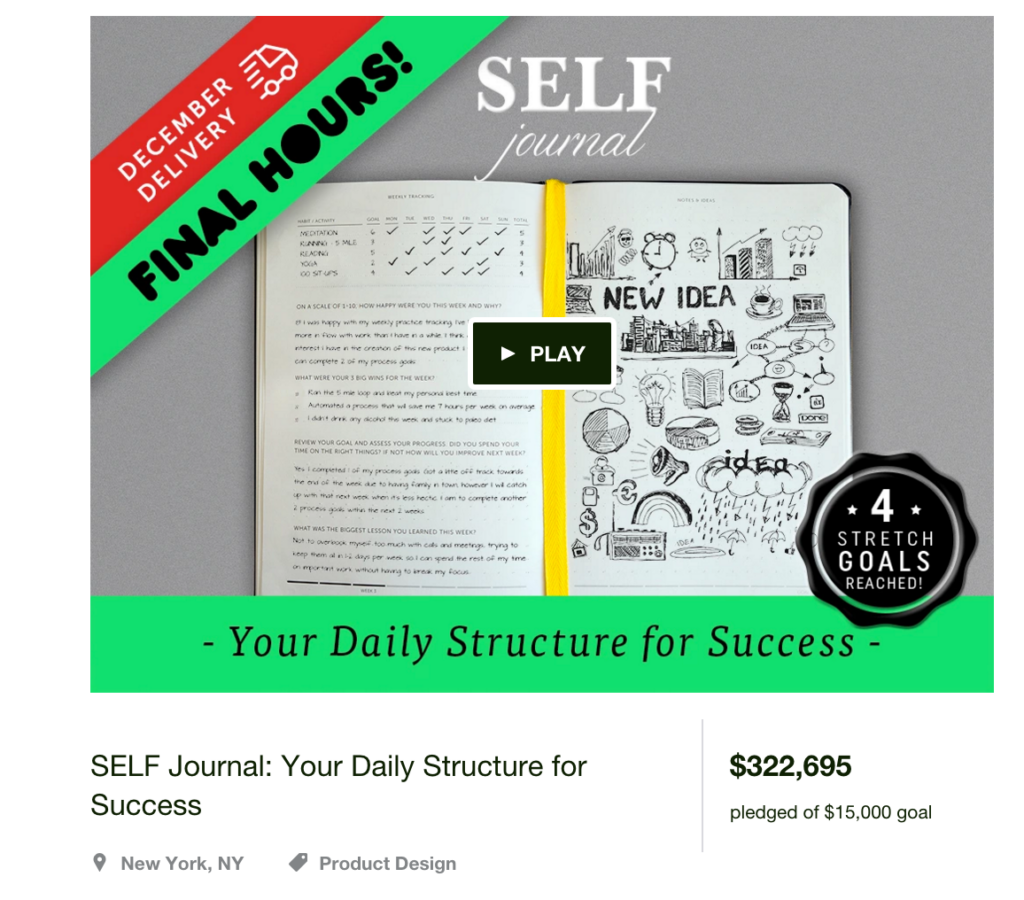
In 2014, my accountability partner Allen and I started working together on creating an Amazon FBA business. If you are in the online world, you know that the Fulfilled-By-Amazon marketplace has exploded over the past several years bringing millions of sellers into the space.
We had friends doing it, and they were making a good amount of money per month so we figured, why not? We took a course that taught us the process and forged ahead.
We invested around 10K of our own money to get started.
The FBA process we followed was essentially researching good products to sell, and finding a supplier on Alibaba for white-labeling products to sell on Amazon through the Fulfilled By Amazon service (FBA). Highly simplified version of the process.
FBA is a very easy and inexpensive way to get started with physical products as you don’t have to deal with any of the actual customer shipping yourself.
Also, with Amazon having such a huge customer base, you already have a built-in audience for your products if you do the right marketing for the right product.
Curious about what white labeling is? It’s essentially when you take an existing product and rebrand it with your logo and packaging.
Some sellers will make a variation or improvement to the existing product, however, the majority do not. Therefore, many products on Amazon are the same, made by the same factory but sold under different brand names, for different prices.
It’s pretty crazy.
Now I’ve experienced Amazon.com as an FBA third-party seller, I tend to shop entirely differently than I used to.
So, what’s possible with this business model?
Well, a friend of mine sells white-labeled phone accessories and makes over $180,000 per month. Cha-ching!
To be frank, when we started this business, it was not about following our passion. We never had a dream we had to be Amazon sellers.
It was purely a money-driven business agenda.
It was something we thought we could do to make some money while we figured out what our “big idea” was.
Little did I know that working together on the Amazon business would lead us to create a product and business that we felt aligned with and led us to ultimately quit.
When we started working on the SELF Journal, it was a side project that we created to solve our problems. We were feeling busy all day but not productive. We weren’t moving forward as we wanted, so we created a tool that helped us be our best, most productive selves.
We thought becoming more productive would help us with Amazon and our other endeavors.
However, this side-project grew a life of its own, and as we developed it, our interest in the Amazon business dwindled. Everything we did for Amazon came from an agenda not driven by purpose or creation but by money.
After reading Drive: The Surprising Truth About What Motivates Us recently, it’s no surprise that we lost enthusiasm, and it became just another job for us.
We were focused on making money, not solving people’s problems. BIG Mistake.
In the months before launching the Kickstarter our primary focus moved to SELF Journal and making it successful, which meant Amazon began to take a backseat.
We launched our Kickstarter and in 34 days this thing that began as a side-project driven by passion exploded and raised $322,695 in 34 days.

Add to this, within mere minutes of our Kickstarter campaign ending I had set us up for preorders for the people who missed our Kickstarter and still wanted to buy.
People still did!
We made over $10,000 in sales over the following 7 days:

That got me thinking…
Our Amazon business was doing a similar amount per month as Celery had done in 1 week…. but I really hated working on it.
Not because the work was so terrible, but because the time investment needed took me away from BestSelf and doing work that I loved and felt aligned with.
I see money as a byproduct of solving people’s problems, and with SELF Journal we created something that clearly did that for people. So why did I want to waste my time on sh*t that I didn’t care about?
Time ≠ Money
Money can be multiplied, stockpiled for a rainy day, and spent however you like. Time is irreplaceable, once you spend it’s gone forever. Whether you’re Warren Buffet or a regular Joe Shmoe, your time is being depleted at the same rate of one day per day every day.
As a society, we’ve been wired to protect against a loss of money rather than a loss of time, probably due to the bias and culture of collecting material possessions as a sign or status of happiness. Imagine a world where we redefined prosperity by our time rather than money.
Therefore, why would I be investing my time, a non-renewable resource, into this Amazon business that I wasn’t passionate about to someday make more money?
Right then and there I decided that I wanted to quit and double down on a project I believed in, enjoyed, and was working on.
I was nervous when I first broke it to Allen, but, when I explained the reasoning, he was on board 100%.
Some people may read this and feel like I wasted a year of my life on a project that didn’t go anywhere. That’s another human condition, sunk-cost bias. This is when you hear “throwing good money after bad”, however, it really goes for any type of time, effort, or money investment you make. Don’t get trapped in this thinking.
It’s about the journey, not the destination – this was a mere stepping stone on my path.
I believe we may have never created SELF Journal had it not been for experimenting with Amazon.
The FBA Amazon experiment, what we learned:
- Creating a Complimentary Partnership: Allen and I learned how to work together and saw how much our skills worked well together. It meant we were able to focus on the tasks we loved and enjoyed rather than trying to wear all the hats.
- About sourcing great manufacturers in China and how to work with them on products.
- How to sell on Amazon, from creating a product page to Amazon PPC advertising which we can later use with our own BestSelf products.
- How to import products from China (which can be pretty complicated and stressful when you’re new), meant we had a good idea of how it worked when Kickstarter rolled around.
- Not to follow the money, but rather focus on solving the problems and people will be happy to pay for the solution
Last note: We didn’t just up and leave Amazon, as we had stock and systems in place we’re currently in the middle of selling the business. A great book I read earlier this year that helped me understand this process was Built to Sell.
If you also want to build a sellable business I’ll be sharing more in the next few months about systems and processes that will essentially buy your time back by leveraging other people and software better.
Become a subscriber receive the latest updates in your inbox.





